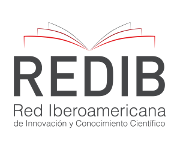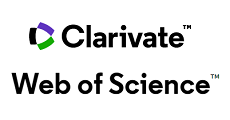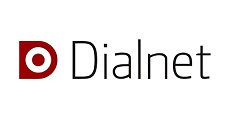Metodología para la evaluación de pérdidas corona en líneas de transmisión
En este artículo se expone el desarrollo de una nueva metodología para el cálculo de pérdidas corona en líneas de transmisión. Mediante la evaluación de los factores climáticos de precipitación (humedad) y brillo solar (temperatura) que influyen sobre el conductor, y bajo el concepto del cociente P/B se determinan las áreas climáticas a lo largo de la ruta de la línea. Para cada área climática, se calculan determinísticamente las pérdidas reales medias y máximas en tiempo seco y lluvioso, producidas sobre líneas típicas de 115, 230 y 500 kV, y se comparan con las pérdidas debidas al calentamiento del conductor. Este trabajo presenta una metodología que será empleada para elaborar el mapa colombiano de pérdidas por Efecto Corona.
References
Anderson, J., Baretsky, M. Y Maccarthy, D. Corona loss characteristics of EHV transmission lines based on project EHV research. IEEE Transactions on Power Apparatus and Systems, 85. 1966. pp. 1196-1212. DOI: https://doi.org/10.1109/TPAS.1966.291639
Bernal, G. Estudio del régimen del brillo solar en Colombia. Bogotá. HIMAT. 1986.
Comber, M., Deno, D. y Zaffanella, L. Corona phenomena on AC transmission lines. En Electric Power Research Institute (Ed.), Transmission Line Reference Book: 345 kV and above. Palo Alto: Autor (Comp.). 1982. pp. 169 - 203.
Comber, M. y Zaffanella, L. Corona Loss. En Electric Power Research Institute (Ed.), Transmission Line Reference Book: 345 kV and Above. Palo Alto: Autor (Comp.). 1982. pp. 319-327.
Gary, C. y Moreau, M. L'effect couronne en tension alternative. Paris: Eyrolles. 1976.
Guhl, E. Las lluvias en el clima de los andes ecuatoriales húmedos. Cuadernos geográficos No. 1. Universidad Nacional de Colombia. Bogotá. 1974.
Instituto Colombiano De Interconexión Eléctrica S.A. Parámetros de líneas de transmisión. ISA. Bogotá. (Informe 1979).
Instituto Geográfico Agustín Codazzi. Carta ecológica. Bogotá: Autor. 1977a.
____, Zonas de vida o formaciones vegetales de Colombia: Memoria Explicativa sobre el mapa ecológico. Bogotá: Autor. 1977b.
Mejía, A. Efecto Corona. Conferencias de líneas y redes. 198. pp. 130 - 138.
Mejía, M. Contribución al conocimiento de la climatología colombiana. Revista de Geografía, 3. 1982. pp. 11-158.
Nigol, O. y Cassan, J. Corona loss research at Ontario Hydro Cold Water Project. AIEE Transactions Power Apparatus and Systems, 80. 1961. pp. 304-313. DOI: https://doi.org/10.1109/AIEEPAS.1961.4501032
Peek, F. Law of corona and the dielectric strength of air-III. AIEE Transactions Power Apparatus and Systems, 32. 1913. pp. 1767-1785. DOI: https://doi.org/10.1109/T-AIEE.1913.4765094
Rangel, E. Estudio de precipitación para la Costa Norte de Colombia. HIMAT. Bogotá. 1984.
Salgado, Meléndez y Asociados. Diseño electromecánico segundo Circuito de la interconexión nacional a 500 kV: Selección del conductor. ISA. Bogotá. 1986.
Servicio Colombiano De Meteorología e Hidrología. Mapa de estaciones meteorológicas. IGAC - SMCH. Bogotá. 1974a.
Simpson, T. y Greenfield, E. Aluminum electrical conductor handbook (1a. Ed.). New York: The Aluminum Association, 1971.
How to Cite
APA
ACM
ACS
ABNT
Chicago
Harvard
IEEE
MLA
Turabian
Vancouver
Download Citation
License
Copyright (c) 1990 Francisco Román Campos, Gustavo Castillo Trujillo

This work is licensed under a Creative Commons Attribution 4.0 International License.
The authors or holders of the copyright for each article hereby confer exclusive, limited and free authorization on the Universidad Nacional de Colombia's journal Ingeniería e Investigación concerning the aforementioned article which, once it has been evaluated and approved, will be submitted for publication, in line with the following items:
1. The version which has been corrected according to the evaluators' suggestions will be remitted and it will be made clear whether the aforementioned article is an unedited document regarding which the rights to be authorized are held and total responsibility will be assumed by the authors for the content of the work being submitted to Ingeniería e Investigación, the Universidad Nacional de Colombia and third-parties;
2. The authorization conferred on the journal will come into force from the date on which it is included in the respective volume and issue of Ingeniería e Investigación in the Open Journal Systems and on the journal's main page (https://revistas.unal.edu.co/index.php/ingeinv), as well as in different databases and indices in which the publication is indexed;
3. The authors authorize the Universidad Nacional de Colombia's journal Ingeniería e Investigación to publish the document in whatever required format (printed, digital, electronic or whatsoever known or yet to be discovered form) and authorize Ingeniería e Investigación to include the work in any indices and/or search engines deemed necessary for promoting its diffusion;
4. The authors accept that such authorization is given free of charge and they, therefore, waive any right to receive remuneration from the publication, distribution, public communication and any use whatsoever referred to in the terms of this authorization.



























